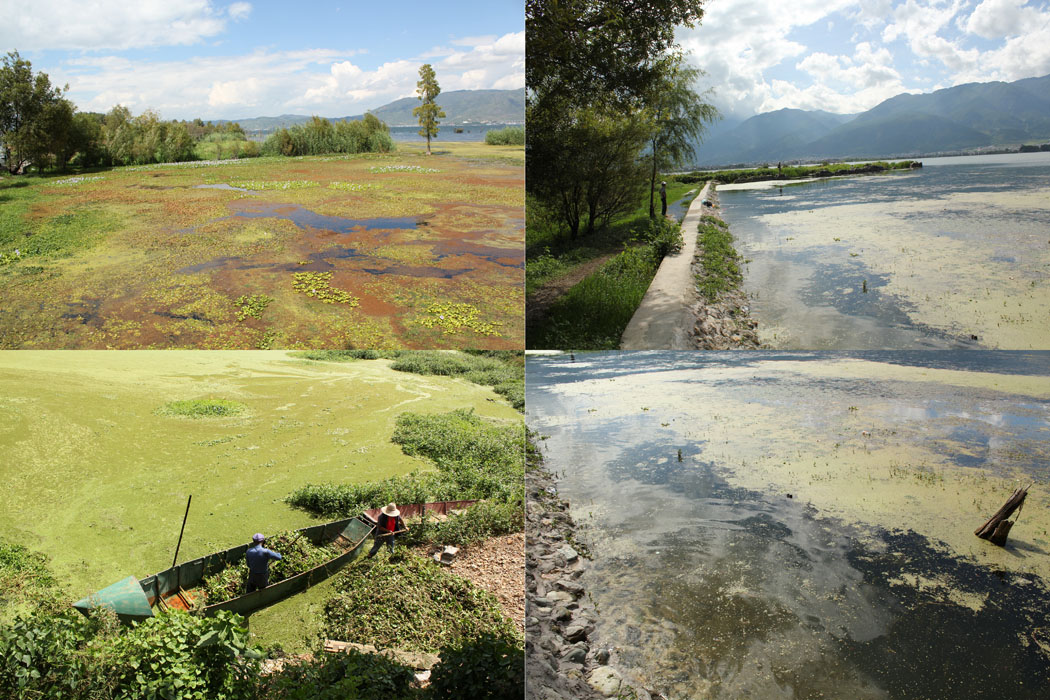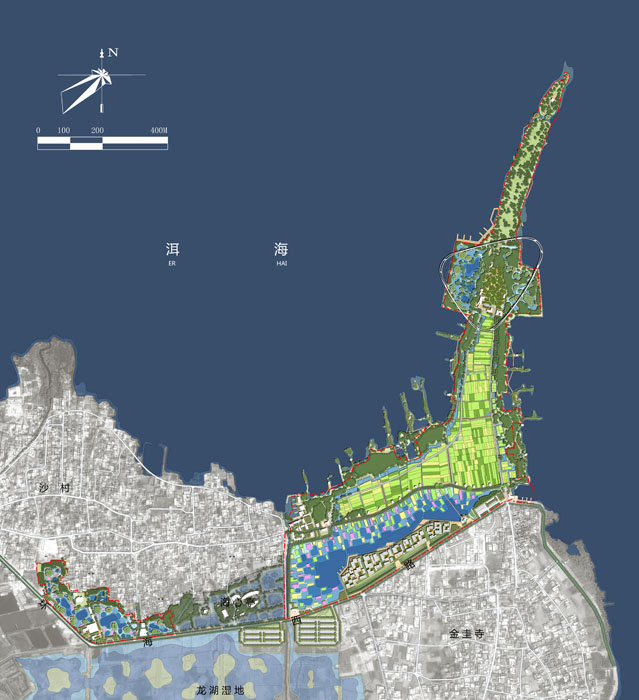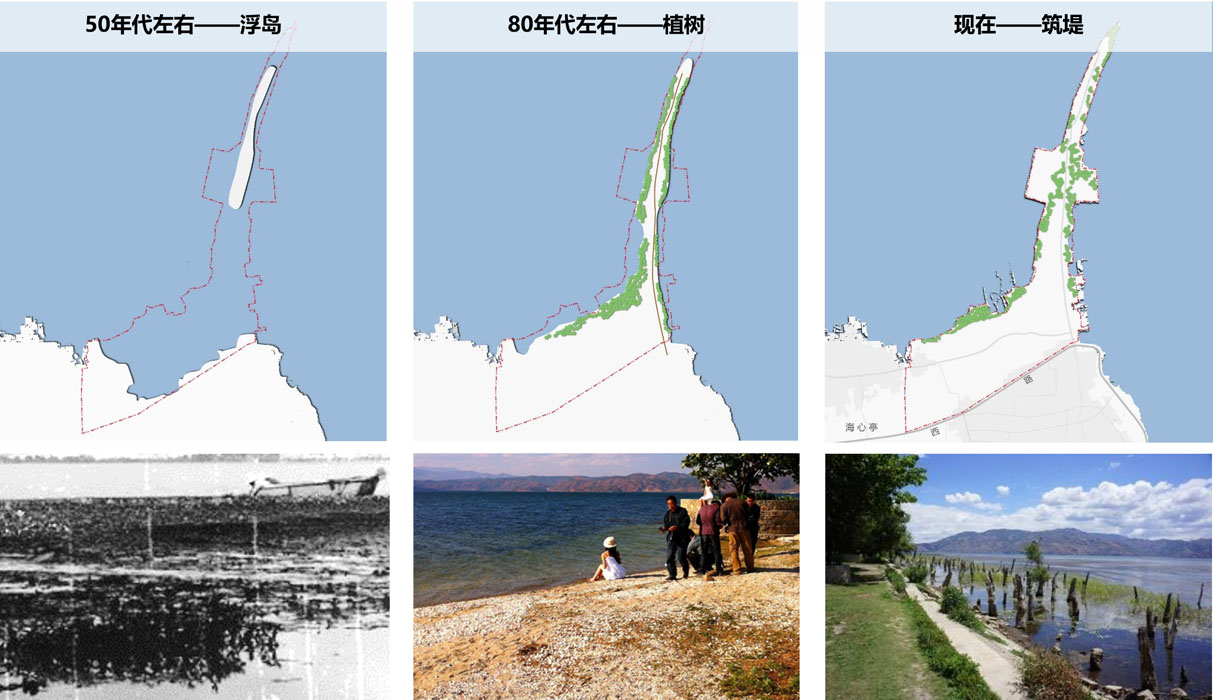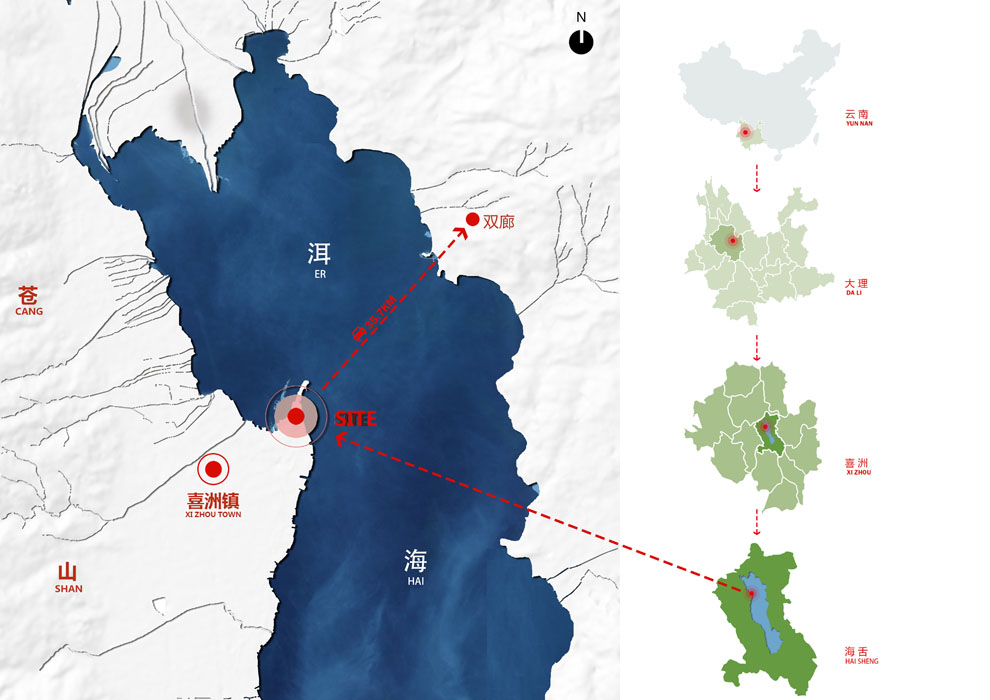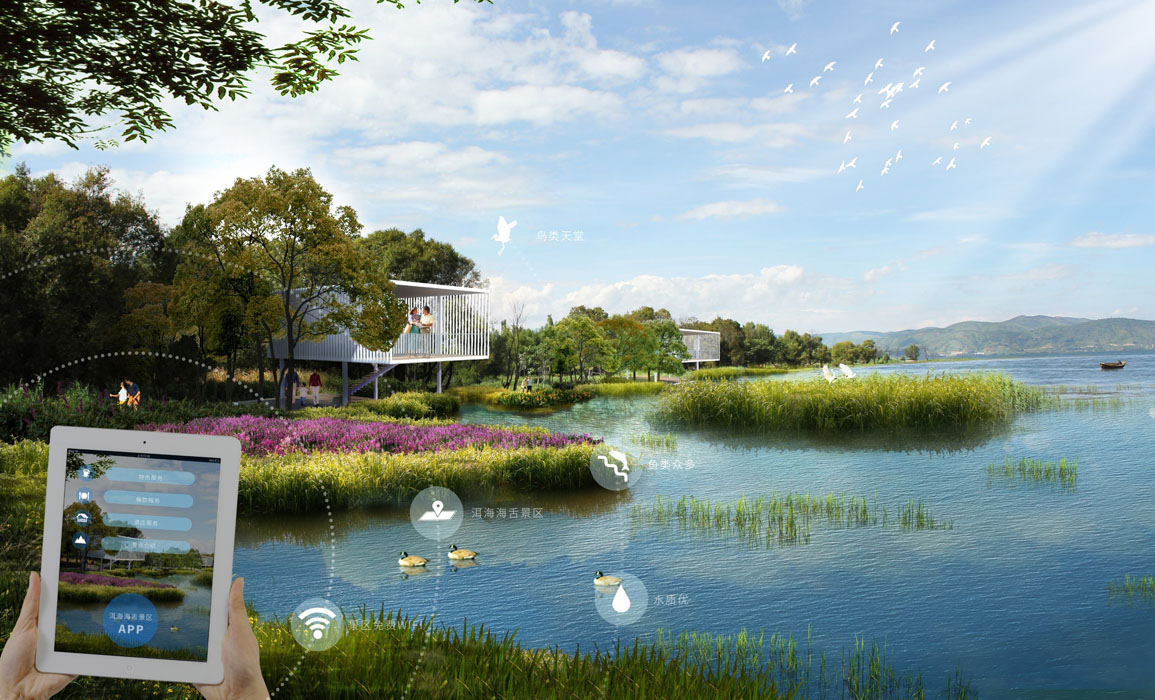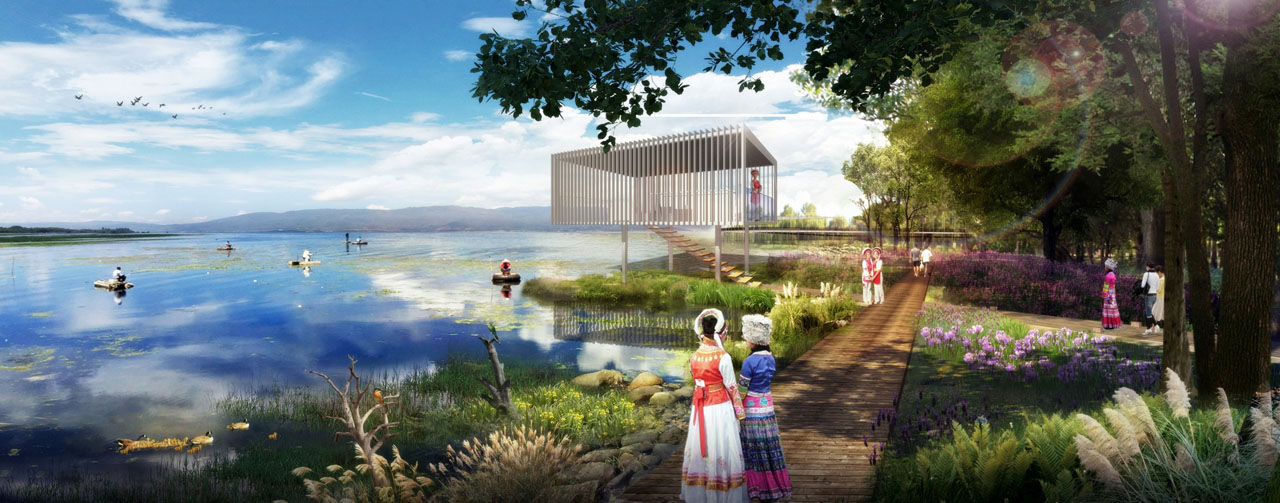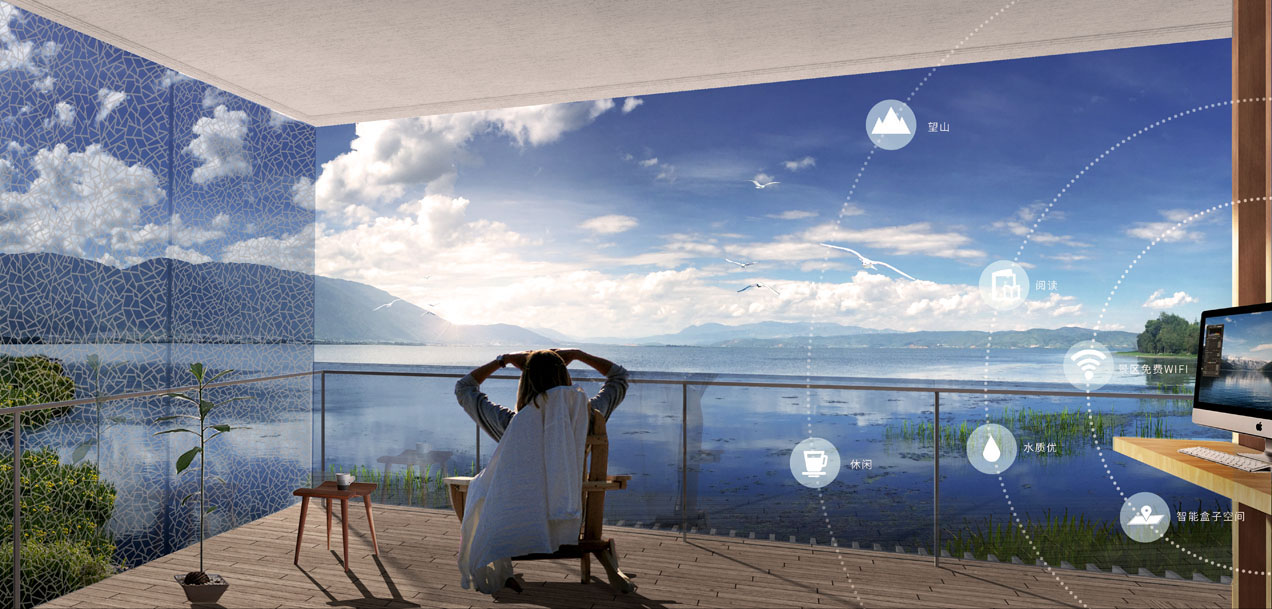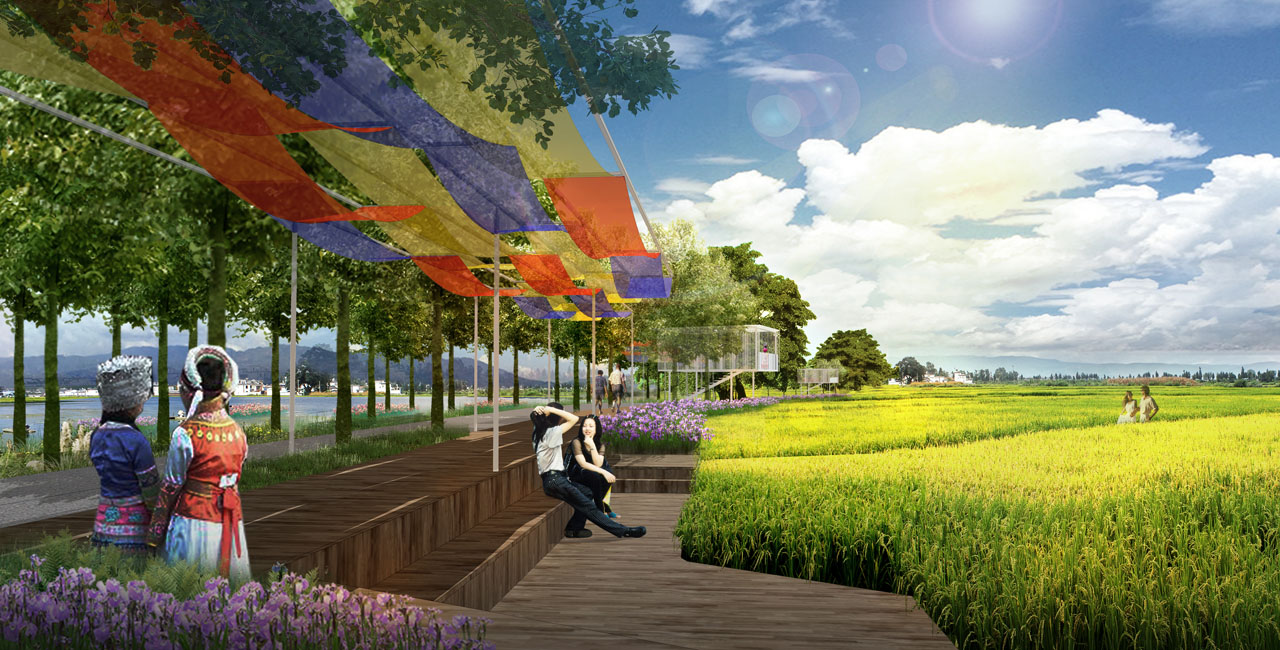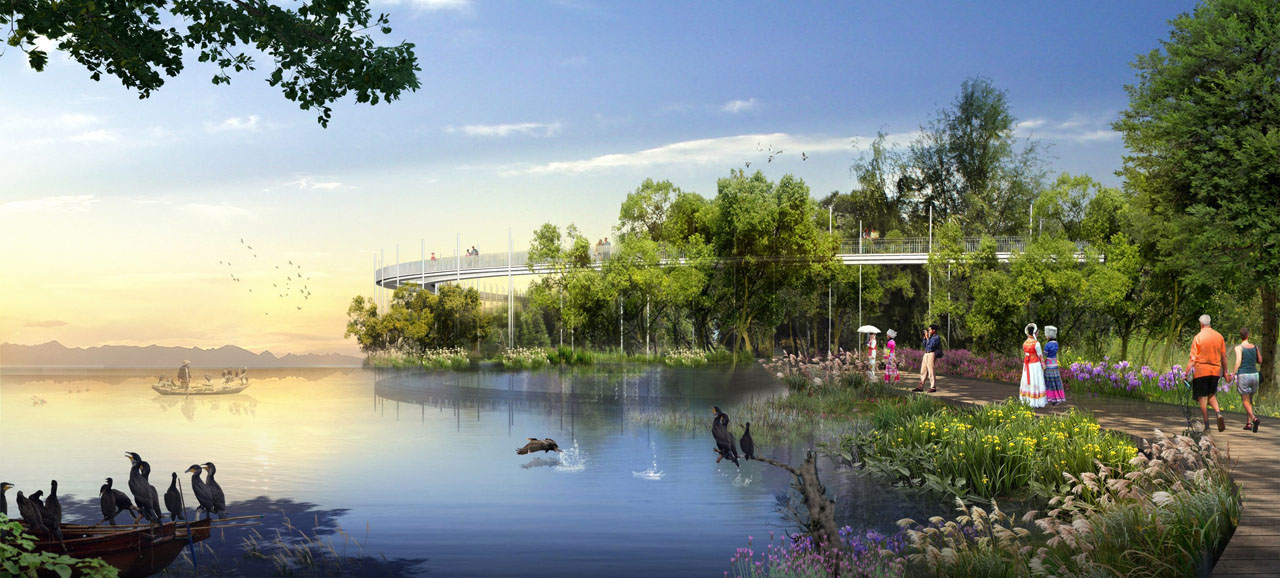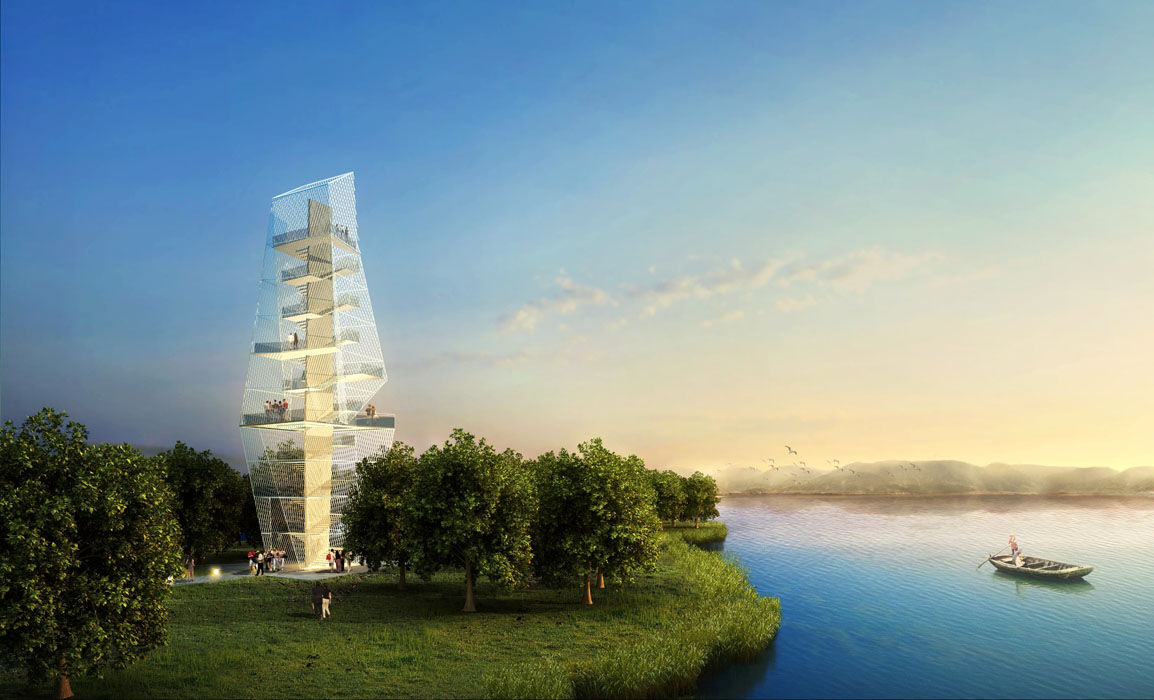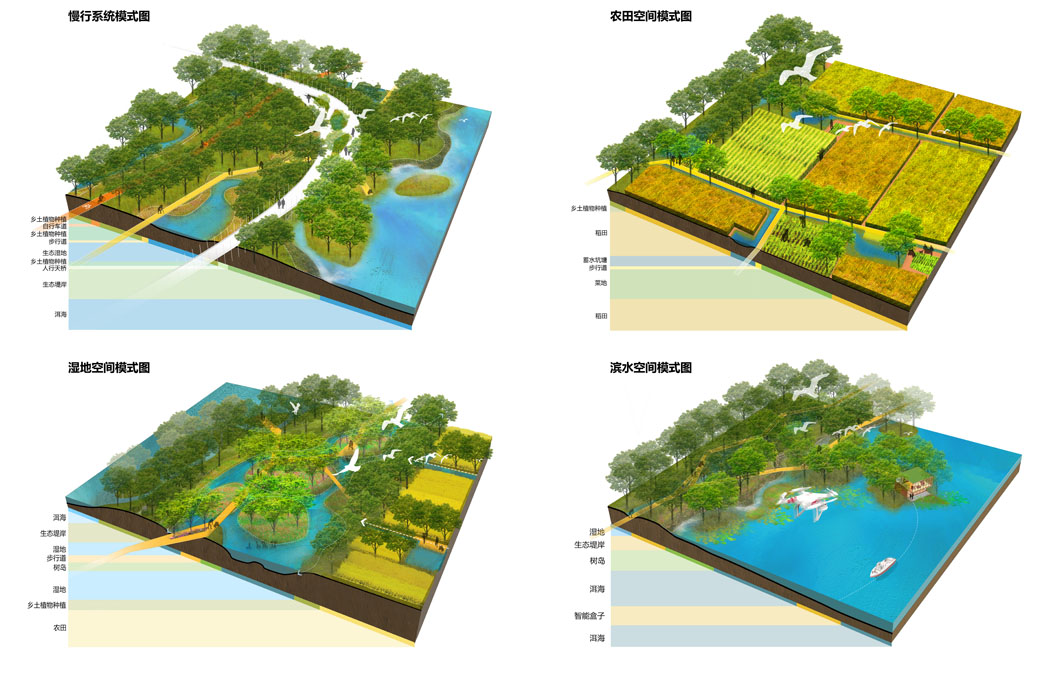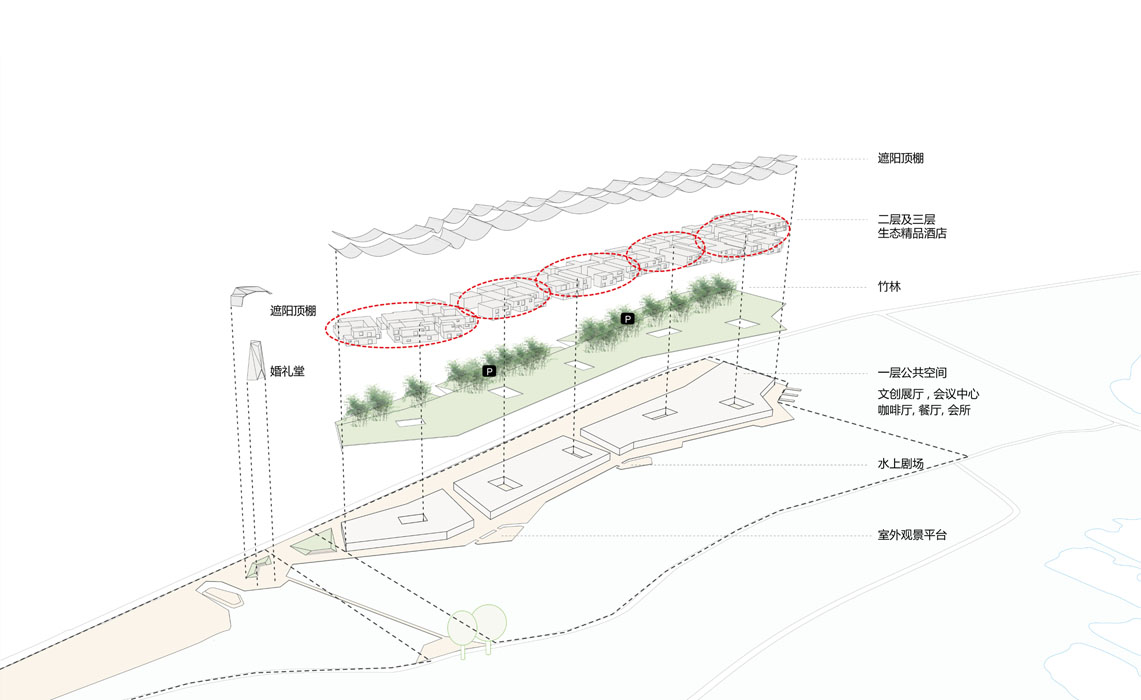Dali Xizhou Haishe Scenic Area Tourism Planning
Project Information
- Project Location:
- China Dali, Yunnan
- Project Scale:
- 43.36 Hectares
- Design Time:
- September 2015
- Client:
- Dali City Planning Bureau, Resort Area Branch
Project Profile
1. Project Statement
The project is located in the Haishe Scenic Area of Xizhou, Erhai, which boasts unique natural advantages. However, with the development around Erhai, the water quality of Erhai is under unprecedented threat. The design follows the natural conditions of the site and proposes strategies to address water pollution, agricultural production, and tourism leisure, transforming Haishe into an ecological and artistic demonstration area that manages Erhai's water quality, preserves Haishe's traditional culture, and enhances tourism quality.
2. Objective and Challenge
Challenge and Goal 1: How to Improve Water Quality?
Village and town sewage, agricultural runoff, and the Wanhua Stream collectively threaten the water quality of Haishe. Existing drainage plans in villages and towns direct rainwater through pipes into Erhai, wasting water resources, and the "Erhai Hundred Villages Sewage Collection and Treatment System" facilities cannot handle village and town sewage. Agricultural runoff enters Erhai untreated, further threatening its water quality. The intermittent flow of the Wanhua Stream and excessive nitrogen and phosphorus levels affect the stability of the ecosystem at its estuary.
Challenge and Goal 2: How to Optimize Traffic?
The planned Huanhai West Road passes through Sha Village and the Haishe Scenic Area, isolating the Longhu Wetland. This prevents tourists from experiencing diverse landscape types, disrupts the integrity of the natural landscape of Haishe, leads to the shrinkage of the scenic area, and disturbs the "slow life" of villagers.
Challenge and Goal 3: How to Preserve Site Memory?
Haishe Scenic Area is an alluvial fan formed by natural processes, with white sandy beaches resembling a white ribbon on the blue sea. However, the original natural landscape is being destroyed by artificial development as the scenic area grows.
Challenge and Goal 4: How to Utilize Haishe's Visual Advantages?
Haishe's inherent visual advantages are weakened by artificial planting, obstructing viewing lines and causing a situation where "Haishe enters the sea, but tourists are unaware; Cangshan is in sight, but its true form is not recognized."
Challenge and Goal 5: How to Improve Service Facilities?
As an important part of the Erhai tourism belt, Haishe Scenic Area's service facilities are lagging, densely distributed, and disorganized, causing chaos at the entrance area.
3. Design Strategy
Strategy 1: Establish a Water Purification System
Using land creation technology as a basic principle, three modes are employed to purify the Wanhua Stream, village and town sewage, and agricultural runoff. Real-time monitoring of Wanhua Stream water quality directs water exceeding standards into wetlands for extended flow paths and multi-level purification before entering Erhai, ensuring the stability of Erhai's water quality and the estuary ecosystem. A vegetative buffer zone captures agricultural pollutants, and multi-level oxidation ponds absorb nutrients, reducing agricultural pollution. The "Erhai Hundred Villages Sewage Collection and Treatment System" facilities are improved to remove pathogens and nutrients from village and town sewage through multi-level surface flow wetlands.
Strategy 2: Build a Multi-Level, Multi-View Slow Traffic System
Based on the natural conditions of Haishe Scenic Area, four routes are planned: the East Line, North Line, South Line, and Central Line, allowing visitors to experience twelve scenic spots. The East Line walks along the east coast, offering distant views of Cangshan and close views of wetland waterscapes; the North Line walks along the west coast, experiencing folk villages and the moon reflecting on Erhai; the Central Line offers walking or cycling through agricultural landscapes, climbing observation towers and bridges to enjoy the beauty of Haishe in the breeze.
Strategy 3: Extract Site Symbols
The blue sea's white ribbon inspires the landscape, serving as the color source for viewing bridges and towers. Traditional Xizhou buildings with gray roofs and white walls influence architectural forms, while the observation tower, inspired by the Three Pagodas of Chongsheng Temple, creates a cultural response with Dali's towers.
Strategy 4: Build a Viewing System
The design includes viewing bridges, towers, and boxes to enjoy the scenery of Cangshan and Erhai. The design principle is minimal intervention, light structures, smart services, and panoramic views to create an experience of Erhai's overall scenery.
Strategy 5: Create an Intelligent Service System
Smart terminal services provide a modern and comfortable experience. Smart terminals effectively connect the visitor center with smart service leisure boxes, creating a tranquil vacation space.
4. Conclusion
The five strategies address the site's five major challenges, helping to build an ecological demonstration area in Haishe. In the future, Haishe Scenic Area will become an important node in the Erhai leisure belt, integrating ecology, leisure, and production into a modern scenic area.

